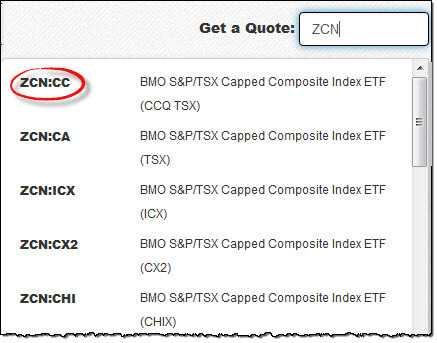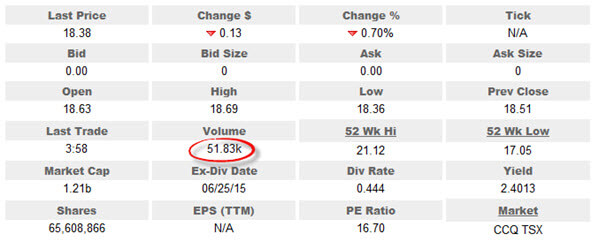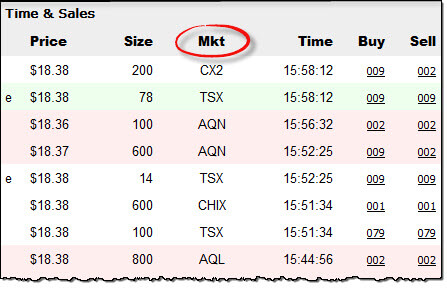The ETF volume you can’t hear
Concerned your ETF isn’t trading very much? Here's why you should probably stop worrying
Advertisement
Concerned your ETF isn’t trading very much? Here's why you should probably stop worrying
 Over at Google Finance, you would have found the same number:
Over at Google Finance, you would have found the same number:
 However, these quotes are incomplete, because they cover only those trades that were filled via the TSX. You can get the full story if you have access to more detailed quotes with data from all the exchanges.
One useful source is QuoteMedia, a financial data provider that provides comprehensive quotes on its website for free. When you visit the site, type ZCN in the quote box at the top right corner. A pull-down menu will appear with the ticker symbol followed by several suffixes, each representing a different exchange. The one labelled :CA covers only the TSX, and it will give you the same numbers as your discount brokerage or Google Finance. However, if you choose the one with the suffix :CC you’ll be able to look at the combined data from all of the exchanges in the Canadian market.
However, these quotes are incomplete, because they cover only those trades that were filled via the TSX. You can get the full story if you have access to more detailed quotes with data from all the exchanges.
One useful source is QuoteMedia, a financial data provider that provides comprehensive quotes on its website for free. When you visit the site, type ZCN in the quote box at the top right corner. A pull-down menu will appear with the ticker symbol followed by several suffixes, each representing a different exchange. The one labelled :CA covers only the TSX, and it will give you the same numbers as your discount brokerage or Google Finance. However, if you choose the one with the suffix :CC you’ll be able to look at the combined data from all of the exchanges in the Canadian market.
 Click the GO button and you’ll get a detailed quote for the ETF, including its daily trading volume across all of the exchanges. On this particular day this turned out to be 51,830 shares—more than three times what was reported by the more popular quote services:
Click the GO button and you’ll get a detailed quote for the ETF, including its daily trading volume across all of the exchanges. On this particular day this turned out to be 51,830 shares—more than three times what was reported by the more popular quote services:

 This is just one ETF on a single trading day, but this isn’t an unusual situation. Indeed, the insiders I spoke to say that alternative trading systems routinely handle a large percentage—and in many cases, a majority—of ETF trading volume. Large institutional orders may be more likely to get filled via alternative exchanges, while retail investors like you and me are more likely to see our trades go through the TSX.
This is just one ETF on a single trading day, but this isn’t an unusual situation. Indeed, the insiders I spoke to say that alternative trading systems routinely handle a large percentage—and in many cases, a majority—of ETF trading volume. Large institutional orders may be more likely to get filled via alternative exchanges, while retail investors like you and me are more likely to see our trades go through the TSX.
Share this article Share on Facebook Share on Twitter Share on Linkedin Share on Reddit Share on Email